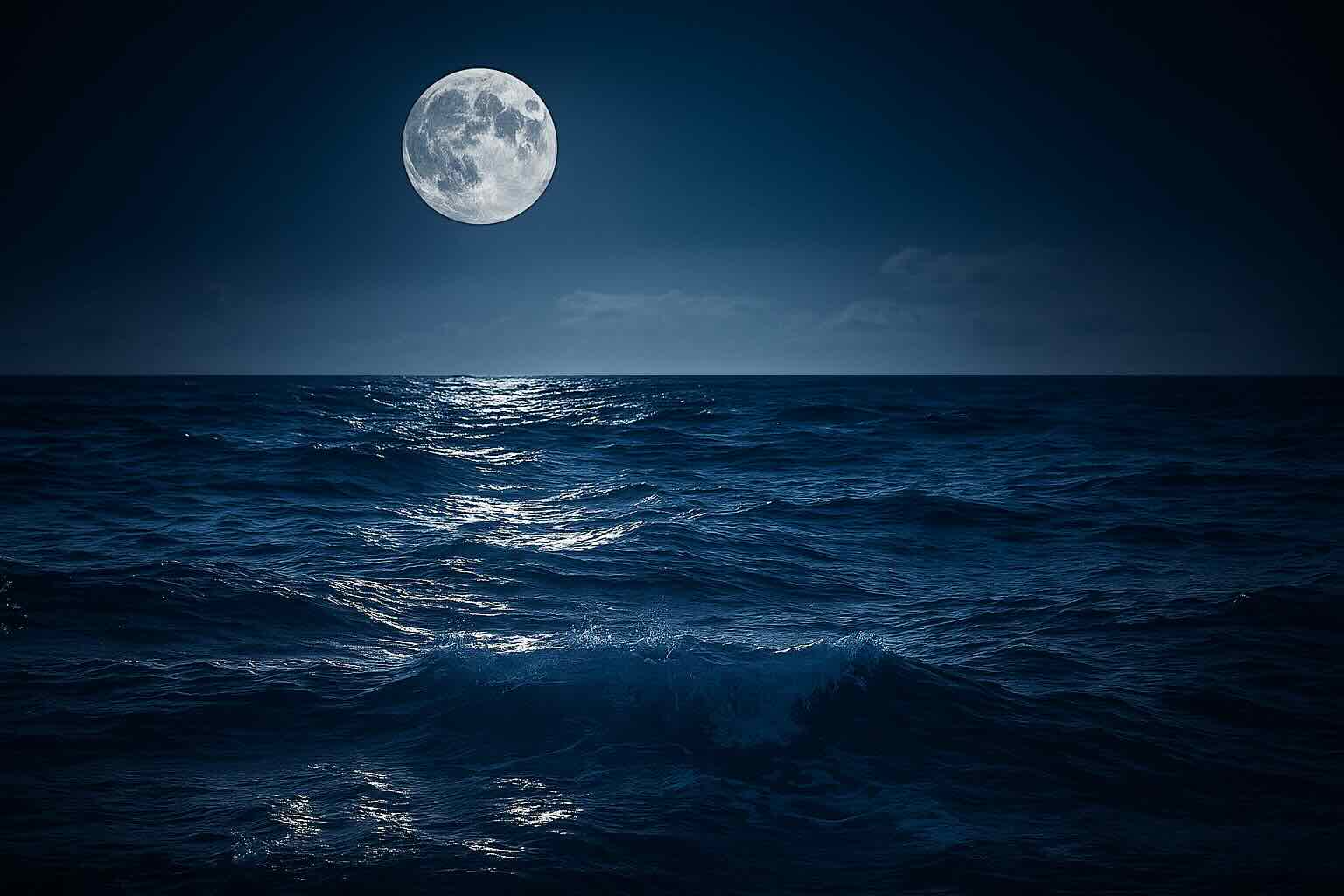The moon is more than just a glowing presence in the night sky. It is Earth’s constant companion, silently shaping the rhythms of oceans and coasts. Its gravitational pull generates tides—powerful movements of water that influence life on our planet in profound ways. From the smallest plankton to migrating whales, countless marine species depend on the moon-driven tides for survival.
How the Moon Creates Tides
Tides are caused primarily by the moon’s gravitational pull on Earth. As the moon orbits our planet, it attracts the ocean’s water, creating a bulge on the side facing the moon. At the same time, another bulge forms on the opposite side due to inertia. These twin bulges move with the moon, producing two high tides and two low tides each day.
The sun also plays a role, but the moon’s effect is stronger because it is much closer to Earth. When the sun, moon, and Earth align during full and new moons, tides are especially high, known as spring tides. When the moon is at a right angle to the sun, tides are lower, called neap tides. These constant cycles set the tempo for ocean life.
The Tides as Nature’s Clock
For marine organisms, tides act as a natural clock. Intertidal zones—areas that are covered by water at high tide and exposed at low tide—host some of the most unique ecosystems on Earth. Creatures like crabs, mussels, starfish, and seaweeds have evolved to withstand dramatic changes in water level, temperature, and salinity.
At low tide, animals may be exposed to air and risk drying out. At high tide, they are submerged again, allowing feeding and respiration. The ability to adapt to this rhythm has made intertidal zones hotspots of biodiversity. The moon, by driving tides, indirectly sets the rules of survival here.
Coral Reefs and Spawning Events
One of the most fascinating examples of lunar influence occurs on coral reefs. In places like the Great Barrier Reef, mass spawning events happen once a year, timed with the lunar cycle. Corals release eggs and sperm simultaneously, creating a dazzling underwater “snowstorm.” This synchronization ensures greater chances of fertilization and survival for the next generation of coral.
Scientists believe the moon’s light and gravitational pull signal the exact timing for these events. Without the moon’s steady rhythm, corals might not reproduce as effectively, threatening entire reef ecosystems that support thousands of marine species.
Tides and Fish Migration
Many fish species rely on tides for migration, feeding, and reproduction. For instance, grunion, a small fish found along the Pacific coast of North America, come ashore to spawn during the highest spring tides. Their unique behavior depends on the moon’s influence, ensuring eggs are safely buried in wet sand until the next high tide.
Larger animals, like sharks and tuna, also follow tidal cues. Strong tidal currents bring nutrients and prey closer to shore, creating feeding opportunities. Even whales adjust their routes based on tidal flows, using them to conserve energy while traveling long distances.
Moonlight and Marine Behavior
Beyond tides, the moon’s light also affects marine life. Many animals use moonlight to guide behavior, especially during reproduction. Sea turtles, for example, hatch at night and use the moon’s glow over the ocean to find their way to the water. Artificial lights on beaches can confuse hatchlings, showing how critical the moon’s natural light is for survival.
Similarly, some species of squid rise to the surface to feed during full moons, while others dive deeper to avoid predators in the brighter light. The moon shapes not only the ocean’s movements but also its creatures’ instincts.
Human Life Shaped by Tides
It’s not just marine ecosystems that depend on tides—humans do too. Coastal communities around the world rely on predictable tides for fishing, navigation, and even energy. Tidal power plants capture the movement of water to generate renewable electricity. Farmers in estuarine regions also depend on tidal flooding to enrich their soil with nutrients.
Historically, tides influenced trade routes, naval battles, and coastal settlements. Even today, understanding tides is essential for shipping, coastal construction, and disaster prevention. Without the moon, Earth’s coastlines and human history would look very different.
What If There Were No Moon?
Imagining an Earth without the moon shows how vital it is. Without lunar tides, many intertidal ecosystems would vanish, along with the species that depend on them. Coral spawning might lose its timing, and fish migrations would be disrupted. On a larger scale, Earth’s rotation would slow, days would grow longer, and climate systems would shift dramatically.
In short, the moon is not just a distant rock—it is a silent architect of life on Earth. Its pull shapes waters, guides animals, and stabilizes the balance of nature.
Conclusion: The Moon as Earth’s Hidden Guardian
The moon’s role in tides highlights a truth often overlooked: our satellite is deeply connected to life on Earth. From tiny plankton in tidal pools to massive whales crossing oceans, countless creatures move in harmony with the moon. For humans too, tides have shaped culture, science, and survival.
As we face challenges like climate change and ocean pollution, understanding the moon’s influence on marine ecosystems becomes even more important. Protecting the seas means recognizing the rhythms that have guided them for billions of years. The moon may be far away, but its pull is felt in every wave that touches the shore.
